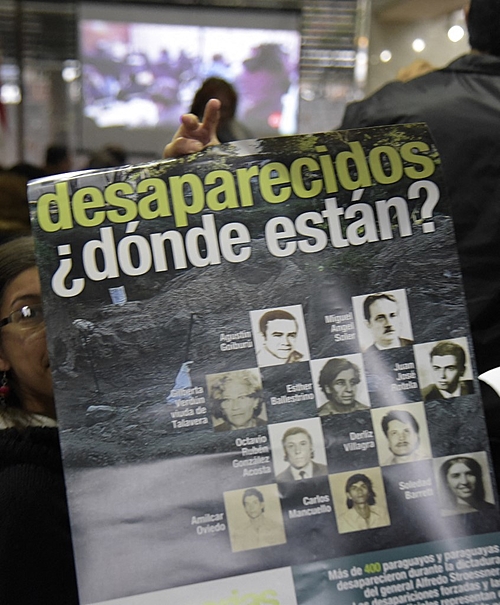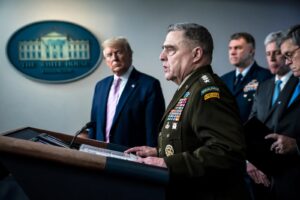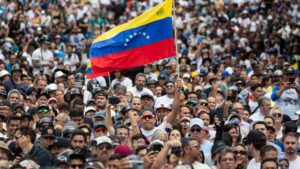
The transnational repression practiced by the dictatorships of the Southern Cone between 1969 and 1981, under the tutelage of Operation Condor, kidnapped, tortured and murdered. At that time, South America became a terror zone, unleashing violence on its opponents. The work of Italian researcher Francesca Lessa focuses precisely on this period, collecting information that became the first database of victims of South American regimes.
The database came about after the researcher from the University of Oxford published the book The judgments of the Condor (Editora Qudu), which presents the actions and functioning of the operation.
To Opera Mundi, Lessa stated that Operation Condor allowed a “collaboration” of the South American dictatorships in “deepening the persecution and the annihilation of the opposition”.
However, according to her, “these policies of annihilation predate Condor”.
Originally written in English, the book, which has already been translated into Spanish and Italian, won the Juan E. Méndez Prize for Human Rights in Latin America this year, in addition to receiving an honorable mention at the Bryce Wood Prize of the Latin American Studies Association ( LASA), the world’s largest professional association for people and institutions engaged in the study of the region. A copy was hand-delivered to Pope Francis.
From the work that Lessa published the database. The file has records of 805 victims of collusion between dictatorships.
Each file brings different information about the victims, such as the country of origin, the political movement they were part of, the place where they were kidnapped, if they survived, if they were murdered or if they are still missing.
For the report, Lessa stated that among them, there are 33 cases of Brazilians who were “victims of repressive coordination”.
Lessa made studies about transnational repression and the violation of human rights in South American dictatorships her life motto. Because of this, she was threatened with death in 2017 by a group of the Uruguayan extreme right. In 2018, she left Uruguay and returned to Oxford, home to the university where she works.
Even so, she was invited and testified in cases that tried the crimes of Operation Condor.
In February of this year, the researcher testified at the hearing that opened the new trial of Jorge Nestor Troccoli. The former officer of the secret service of the Uruguayan Navy (Fusna) is already imprisoned in Italy in life imprisonment for the death and disappearance of dozens of Italians during the South American regimes. In addition to him, 13 more people were sentenced.
The second case judges Troccoli’s participation in the murder and disappearance of Raffaela Filipazzi, José Potenza and Elena Quinteros, between the 1970s and 1980s.
Check out Opera Mundi’s interview with Francesca Lessa in full:
Opera Mundi: Francesca, did the annihilation of political dissidents abroad begin with Operation Condor?
Francesca Lessa: Operation Condor allowed South American dictatorships to collaborate with each other to further the persecution and annihilation of the opposition, but in reality, these policies of annihilation predate Condor.
For example, in Brazil, with the dictatorship of 1964, there was immediate political persecution, which later became even more acute with Institutional Act Nº 5 of 1968.
In Uruguay and Argentina, persecution of the opposition had already started before the dictatorship. The coup in Uruguay took place in June 1973, but the cases of human rights violations and political persecution began in 1968. The same thing happened in Argentina, where the coup was carried out in 1976, but the violent repression of the political opposition was already part of the country’s reality.
When was Condor actually created?
On November 28, 1975. This happened because the dictatorial governments of Argentina, Bolivia, Chile, Uruguay and Paraguay, the five founding countries – Brazil joined successively, as well as Peru and Ecuador – decided to coordinate their repressive policies together because many adversaries politicians had abandoned their countries and gone into exile in Chile, Uruguay and Argentina. With that, there was a need to somehow suspend the borders to be able to capture them abroad.
And how does Brazil fit into this context?
Brazil played an important role within Condor, not least because the operation was not born overnight. Many years of past practices and collaborations allowed the operation to be created that day.
And many of these earlier collaborations were promoted by Brazil from the late 1960s onwards, with the first cases of Brazilian exiles living in Uruguay, Chile and Argentina who were illegally detained, tortured and released, some sent to Brazil, where they were killed or missing.
So, the first cases of transnational repression are really against Brazilian exiles who belonged to various opposition groups.
How many victims are Brazilian?
There are 33 cases of Brazilian victims of repressive coordination. 22 of them took place between 1969 and 1973; five in 1974; one in 1975; four in 1976; and one in 1977.
How many operations took place in Brazil?
There were 27 cases in Brazilian territory, almost half between 1973 and 1975, the rest between 1977 and 1980. Many cases happened at the border, like Lorenzo Vinas, for example, so we recorded them separately.
During your research, you received death threats, along with others. What did these threats entail?
Yes, I and 12 other people, 10 Uruguayans and one Brazilian, were threatened with death in 2017 by an extreme right-wing group in Uruguay called Comando Barneix.
In fact, that was the last name of General Pedro Barneix, who killed himself in 2015, when he was being prosecuted for the death of a political activist that occurred in 1974.
On a personal note, I had to accept that Uruguay was no longer a safe place for me. And, professionally speaking, I was advised by both Oxford University and the Italian Embassy to leave the country, and in that context I had to reorganize all my research.
What stage is the investigation at?
Let’s say that for a long time there was no progress, until we filed a complaint with the Inter-American Commission on Human Rights. At the end of 2021, one person was arrested, but a year and a half has passed and we have had no more news, so it seems that the investigation is again at a standstill.
Have you been frequently called to testify in Operation Condor trials?
So far, I have been called to testify as an expert witness in two trials. One at the Inter-American Court of Human Rights, in 2021, in the Julien Grisonas Family case against Argentina, where I presented the results of my investigation into the Uruguayan victims of the Victory of the People’s Party (PVP) persecuted in Argentine territory, including the family composed by Mario Roger Julien and Victoria Grisonas, who disappeared with their four-year-old and one-and-a-half-year-old children in 1976.
I was an expert witness for her children, who survived after being kidnapped and detained in Argentina, Uruguay and Chile. I have now testified at the Court of Assisi in Rome in the Filipazzi, Potenza and Quinteros cases, in the case against Nestor Troccoli.
Source: www.brasildefato.com.br

